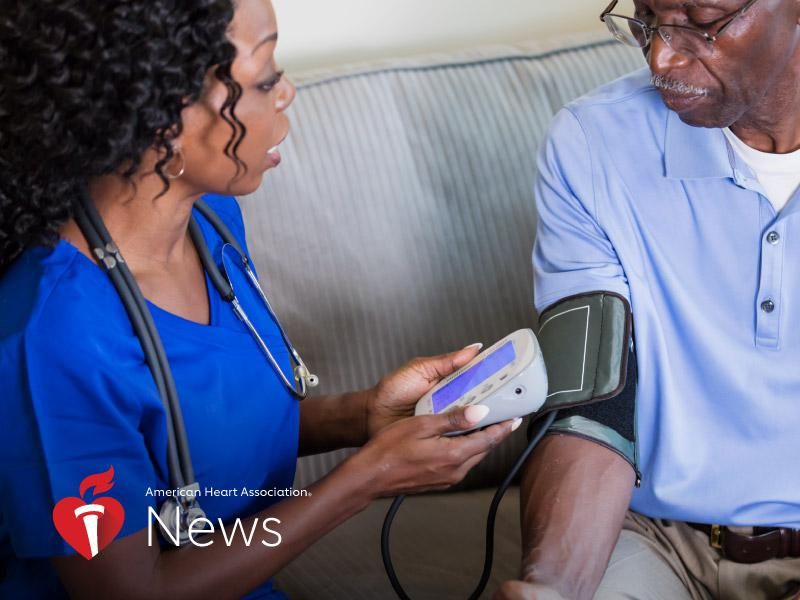MONDAY, Feb. 22, 2021 (American Heart Association News) — Enduring a lifetime of discrimination may increase the risk of high blood pressure in Black people but not in Hispanic, Chinese or white people, a new study suggests.
Previous research has linked lifelong discrimination to the development of high blood pressure, also known as hypertension, in Black people. This new study, however, is among the first to look at multiple types of discrimination in a large multi-ethnic group over a period of time.
The study included 3,297 Black, Hispanic, Chinese and white adults from 45 to 84 years old. They did not have high blood pressure at the start of the study. Participants were asked to report experiences of lifetime and everyday discrimination.
Lifetime discrimination measures included six items, such as being denied a promotion or having life made difficult by neighbors. Everyday discrimination, meanwhile, consisted of nine items, such as being treated with less respect than others or being harassed in day-to-day life.
After nearly two decades, almost half of participants developed high blood pressure. Black participants who reported lifetime discrimination had a 35% increased risk of hypertension, even after accounting for age, income, education, body mass index, physical activity and other factors. Everyday discrimination, however, did not appear to contribute to risk for hypertension.
“Discrimination impacts the health of Black Americans and it should be recognized as a major public health problem,” said Allana T. Forde, lead author of the study published last week in the Journal of the American Heart Association. In November, the American Heart Association issued a “call to action” advisory acknowledging structural racism as “a fundamental cause of poor health and disparities in cardiovascular disease.”
“Health professionals should look beyond traditional risk factors, such as diet and physical activity, and acknowledge discrimination as another risk factor,” said Forde, a researcher at the National Institutes of Health’s National Institute on Minority Health and Health Disparities.
Surprising for researchers, she said, was that lifetime discrimination did not reach the level of statistical significance for contributing to high blood pressure among Chinese and Hispanic participants, even after accounting for being born outside the United States.
Studies in other areas of the U.S. are needed to confirm the findings, researchers said, because the new study was limited to those living in five large cities and one county. In addition, the study only assessed discrimination experiences once at the start of the study, making it unclear what impact changes in discrimination exposure might have had on hypertension development during the follow-up period.
“There is always a concern that not enough subjects were included in the study to show differences in populations or that not all relevant variables were accounted for,” said Dr. Willie Lawrence, chief of cardiology at the Research Medical Center in Kansas City, Missouri. He was not involved in the study.
When measuring decades of discrimination that leads to hypertension, other social determinants of health also must be accounted for. These include health care access, transportation options and a person’s neighborhood.
“Whether communities have sidewalks and green spaces impacts health,” Lawrence said. “If we want to make people healthier, we have to not only eliminate disparities in health care delivery, but we must also seek equity in housing, neighborhoods and education.”
Overall, the study found Black people reported the highest levels of discrimination. About 65% reported lifetime discrimination compared to 42% of Hispanic people, 40% of white people and 23% of Chinese people. Black people most often attributed the unfair treatment to race, whereas white people by far attributed it to non-racial factors such as age, sex or religion. Hispanic and Chinese people were about evenly split between feeling the discrimination was motivated by race versus other factors.
For everyday discrimination, 52% of Black people, 32% of white people, 26% of Hispanic people and 20% of Chinese people reported high levels of exposure.
“Race is complicated in America. It is not genetic,” Lawrence said. “So, I’m not ready to believe that when people of other colors are treated the way Black Americans have been treated for decades that they won’t have higher rates of high blood pressure.”
Even so, he said, “it’s an important study that adds to our belief that social factors impact health.”
Certain, however, is that Black people have higher rates of high blood pressure than other racial and ethnic groups. According to AHA statistics, about 58% of Black adults in the U.S. have the condition, which increases the risk for heart attack and stroke.
“Understanding the social experiences of Black Americans can contribute to improving health and reducing health inequities,” Forde said.
American Heart Association News covers heart and brain health. Not all views expressed in this story reflect the official position of the American Heart Association. Copyright is owned or held by the American Heart Association, Inc., and all rights are reserved. If you have questions or comments about this story, please email editor@heart.org.
By Kimberly Hayes Taylor
Copyright © 2025 HealthDay. All rights reserved.

